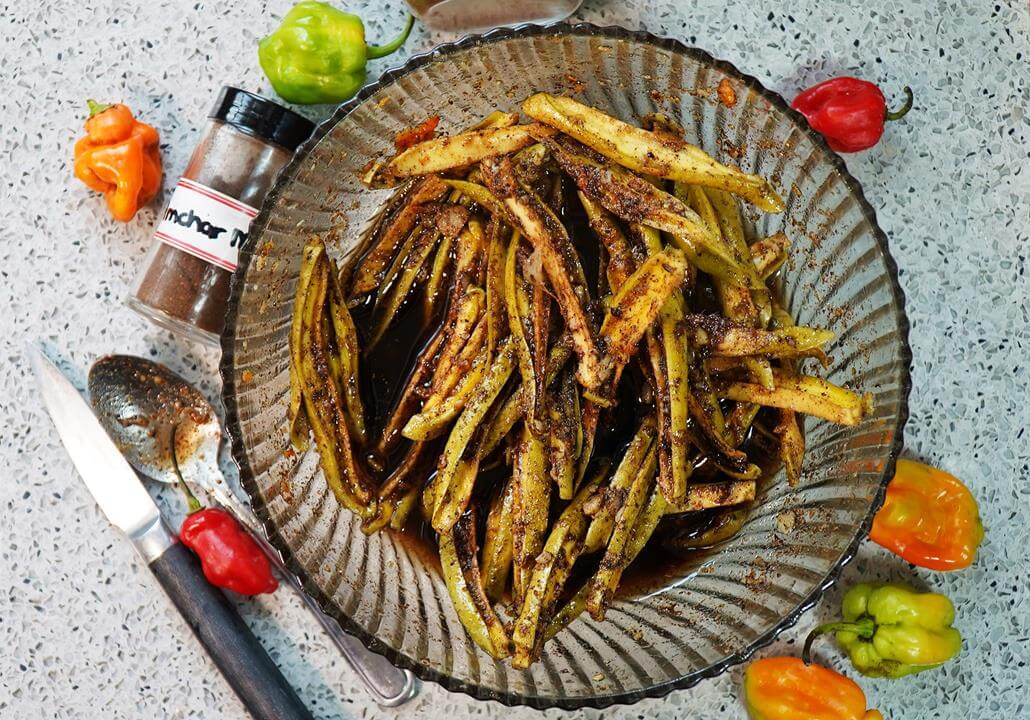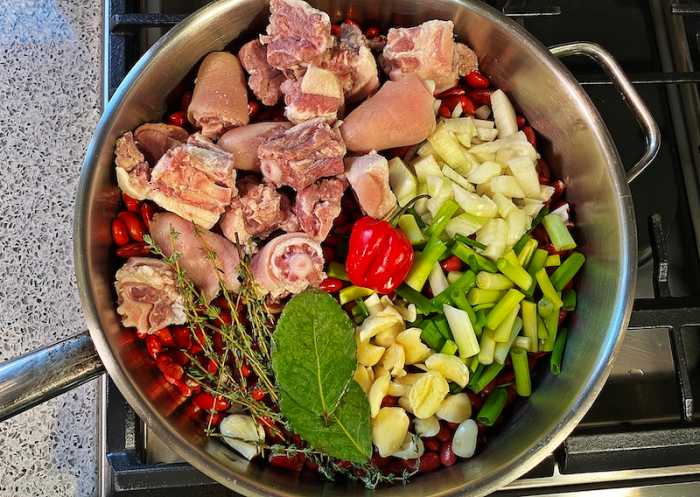Mango Anchar (or you may say Mango Achar), is one of those spicy condiments enjoyed with curry dishes (or on it’s own as a snack), typically made when mango are in season in the Caribbean. Green (not fully matured) mangoes are cut into slices and dried in the tropical sun, before being flavored with with spices, garlic and Scotch Bonnet peppers.
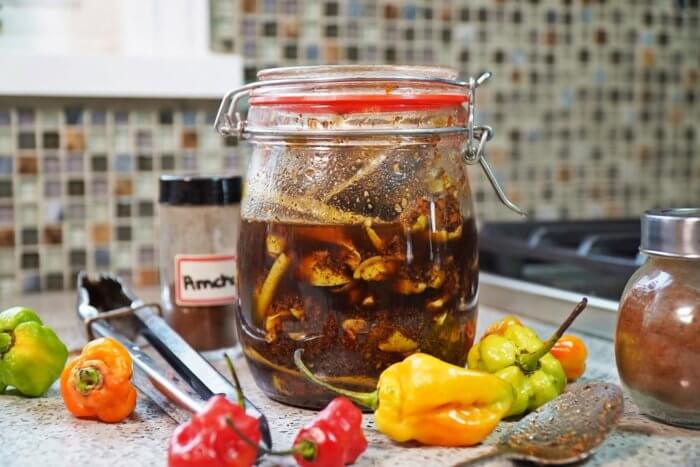
You’ll Need..
5-8 green mangoes
1 1/2 tablespoon sea salt
1 heaping tablespoon brown sugar
4 scotch bonnet peppers
10 cloves garlic
2 heaping tablespoon ground roasted cumin (geera)
3 tablespoon anchar masala
2 cups Vegetable oil (see my note below)
Important! Due to camera difficulties (I film with one camera and do still-shots for the website with another. That camera is giving major issues) I could not take stills for the recipe post. Hopefully I can remedy this situation soon.
Please refer to the video below for more info where additional explanation may be needed.
Remove the stems from the mango (discard), then using a SHARP clever or large chefs knife, cut the mangoes into 1 cm size pieces. Remove the inner core (discard) and wash well with cool water 9 (drain).
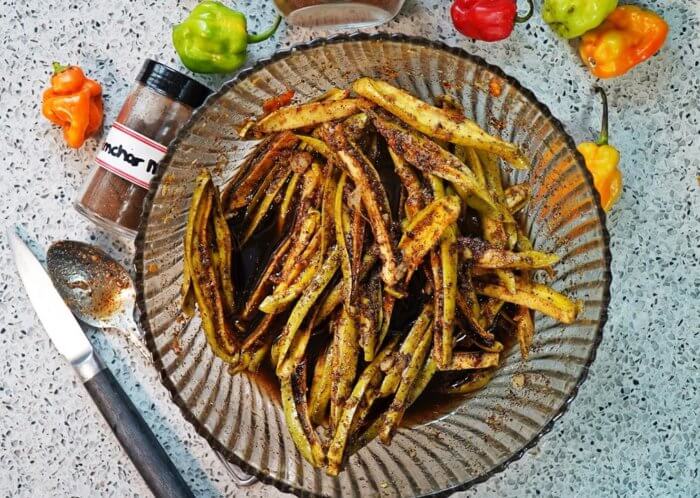
Place the drained mango pieces into a bowl and toss with the salt. Now place in a drainer and let it sit for a couple hours. This step helps to remove some of the tart taste from the mangoes as well as some moisture.
Since I don’t have access o the tropical sun as it’s traditionally done (mango pieces are placed in the sun for 3-4 days to dry), I use my oven.
Place the mango pieces evenly on a baking sheet and onto the middle rack of the oven. Set it anywhere between 140 and 180 F. Should your oven not go so low, go as low as you can and leave the door slightly open.
It will take between 11 and 15 hrs to dry off, so I usually do this overnight. Should you have a food dehydrator, feel free to use it.
The next step in to place the garlic and scotch bonnet peppers into a blender and pulse to get tiny bits and not too much of a liquid. I added 2-3 tablespoons of veg oil to help it. Or you can simply chop both things by hand.
When I shared the Apple Kuchela and other kuchela recipes I got a lot of “talk” about it’s not traditional since I didn’t use mustard oil.
I suggest you do your research on the process of making Mustard Oil and why it should be avoided. See the image below, especially where it says, For External Use Only.
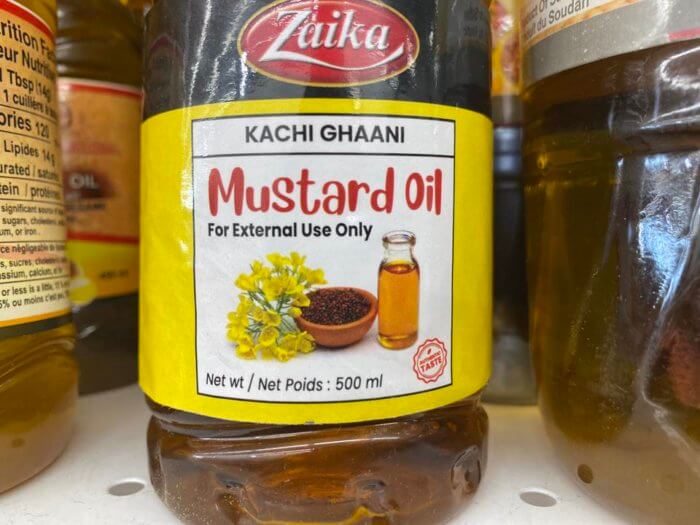
It’s time to finish up. Place the dried mango pieces in a bowl and cover with hot water for 10 minutes (explained in the video below). As this happens, place the oil in a pan, toss in the blended garlic and peppers and heat on a very LOW flame for 5 minutes. Very low as want to infuse the garlic and peppers into the oil.
Drain the mango pieces well. Place them into a large bowl and toss with the Anchar Masala and ground roasted Cumin (geera). I like adding a bit of sugar here as well, to help with the tartness of the mango.
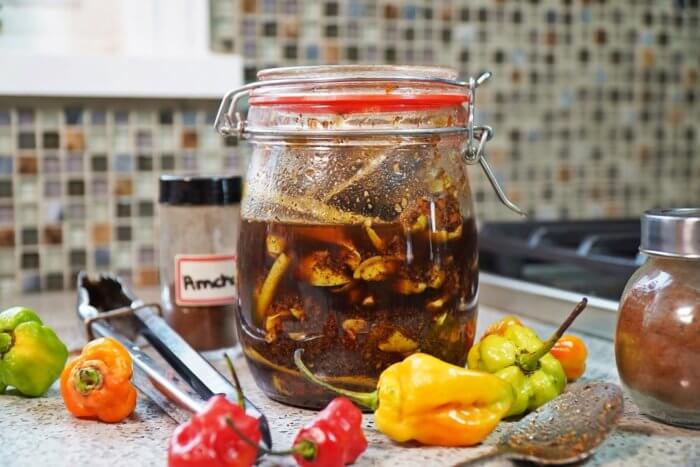
Please note that if you want a deeper garlic flavor or have it more spicy you can adjust the amounts to your liking. No need to add salt as we dry brined it at the start.
Now pour the heated garlic pepper infused oil all over it and stir well. NO need to have the oil screaming hot, just a gentle warming is all you need.
Into a sterilized glass container and it will last months. For a longer shelf life you can store it in the fridge. I used a lot of oil in my recipe as while most people go for the mango pieces, I like to drizzle the oil onto my plate.
Yes, a little different than the traditional method of making Mango Anchar, but just as spicy and delicious on it’s own or as a side to your fav curry and vegetarian dishes. FYI in the little village in Trinidad and Tobago where I grew up, we called this Anchar, but most people refer to this an Achar.
Drop me your comments below, tag me on Instagram and don’t forget you can now get my cookbook – The Vibrant Caribbean Pot, 100 Traditional And Fusion Recipes @ CaribbeanPot.com/CookBook/


